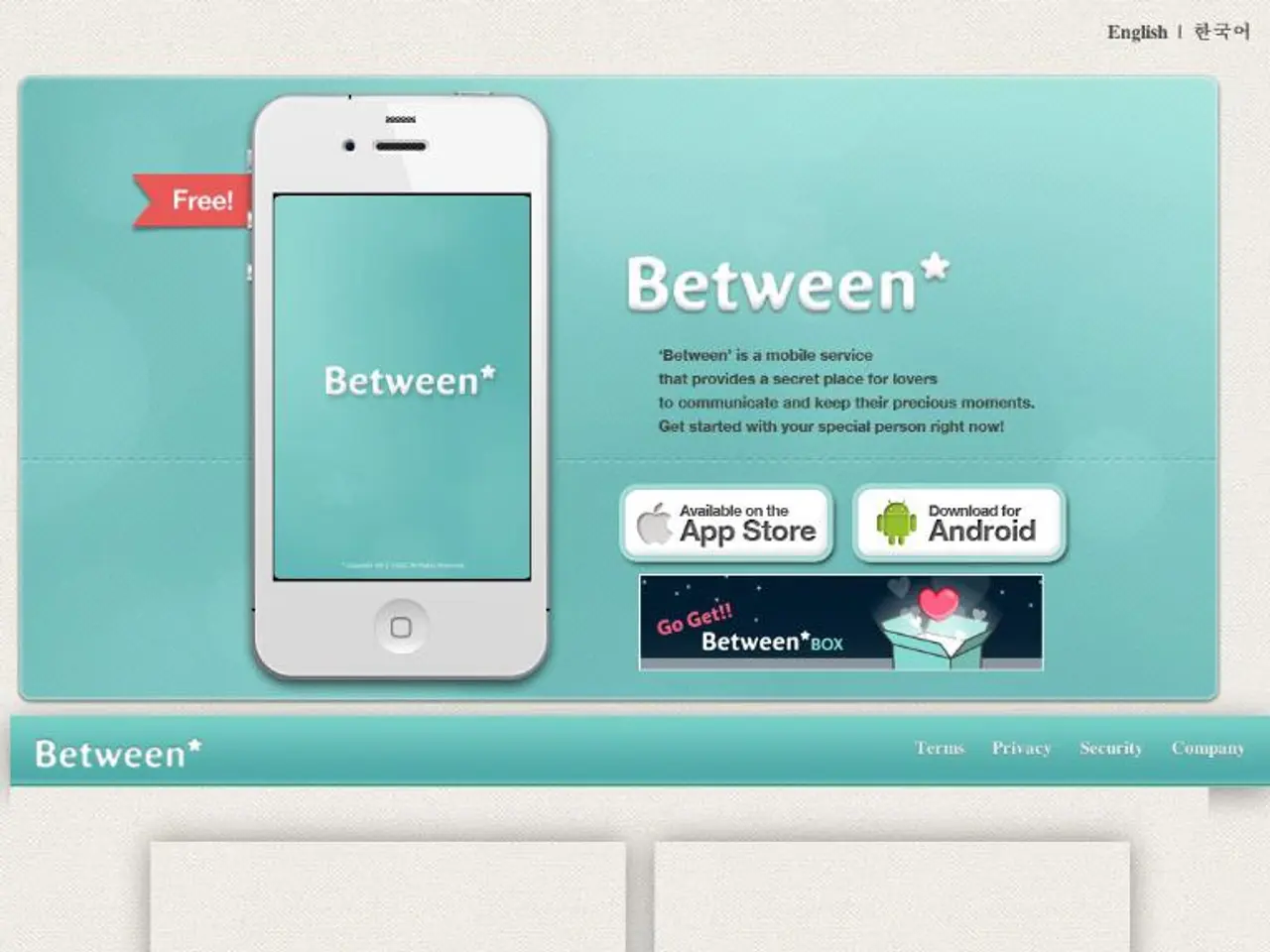Creating an iPhone Application: From Initial Idea to App Store Submission
Building Your Own iPhone App:
The booming mobile application market, currently valued at a staggering $206.85 billion in 2022, is expected to surge even further with a CAGR of 13.8% from 2023 to 2030. In this lucrative market, the Apple App Store segment dominates, acquiring over 62% of the global revenue share.
This overwhelming share can be attributed to the higher monetization rate of iOS apps, which generate revenue through in-app purchases and premium apps. Plus, iOS boasts a dedicated user base, particularly in regions like North America, Europe, and parts of Asia.
So, if you're looking to capitalize on this explosive growth, it's crucial to understand the iPhone app development process. In this guide, we'll walk you through the entire process, from brainstorming to publishing your app on the iOS App Store.
How to Create an iPhone App
1. Establish your Idea and Goals
Before diving headfirst into iOS development, it's essential to clarify your app's purpose and objectives. This will help you stay focused on your vision during the development journey, even when faced with challenges.
So, what's your mission? Identify the specific problems your target audience faces, and determine how your app can solve them. Remember, a vast 99.5% of consumer apps fail, so finding a niche and offering a unique solution is crucial for success.
Aiming for Revenue? It's understandable if your goal is to generate income. Creating an iPhone app, even a basic one, can cost a pretty penny. Also, don't forget that your app's expenses don't end when it's published on the App Store. Maintenance, updates, and consistent user engagement are ongoing costs you'll need to invest in.
Having a clear objective from the start will aid in your decision-making throughout the app development process, helping you prioritize features, market effectively, and allocate resources effectively.
2. Study your Competition and Target Market
Understanding your competition is vital to identify gaps in the market and differentiate your app from existing options. This step helps you identify opportunities for improvement and innovation in your own iPhone app.
To research your competition effectively:
- Identify major players: Make a list of the primary players in your industry that develop iPhone apps for your target market. Explore the App Store, industry directories, tech forums, and other platforms.
- Test their apps: Pay close attention to the user experience, features, design, and overall quality. Note what they do well and where they fall short. This analysis will provide valuable insights into user expectations and help you create a better app.
- Examine branding: Identify their strengths, weaknesses, and unique selling points. This will help you refine your app's features and differentiate it from competitors.
- Analyze customer reviews and ratings: Identify common pain points or missing features that you can address in your app. Learning from others' mistakes and successes will guide your app development process.
Researching your target market is equally important for understanding their demographics, preferences, behaviors, and pain points. To gather information about your potential users:
- Surveys, Interviews, and Focus Groups: Directly gather insights from potential users to understand their needs and preferences.
- Online Platforms: Explore forums, social media, and app reviews to understand user sentiments and common challenges.
Remember that research is an ongoing process. As the app market evolves and user preferences change, stay connected with your target audience, monitor your competition, and adapt your app accordingly.
3. Identify key features
The purpose of determining essential features is to develop the minimum viable product (MVP). The MVP represents the basic version of your app that includes the core functionalities necessary to provide value to your users.
Focusing on the essential features allows you to launch your app faster, gather user feedback, and iterate on future updates. Many successful iOS applications started with an MVP, including Facebook, which launched with just a few essential features.
So, how do you prioritize features?
Core vs secondary features
When building apps at our website, we always help our clients distinguish between core and secondary features.
Core features are the essential functionalities that directly fulfill the primary purpose of your app and provide value to users. Secondary features complement the core features by enhancing the user experience or adding additional value.
To identify your app's core features:
- Go back to the primary purpose: Consider the main goal or value proposition of your app. This primary purpose will guide you in identifying the core features that are necessary to fulfill that purpose.
- Identify must-have functionalities: Determine the features that are crucial for users to achieve their desired outcomes within your app. These features serve as the backbone for your app.
- Evaluate user expectations: Put yourself in users' shoes and figure out what features are considered essential in your app's domain or industry. Conduct user research, analyze app competitors, and collect user feedback to gather insights into the features that users commonly expect or value.
- Prioritize based on user value: Assess the impact of each feature on the overall user experience and the value it brings to your app. Choose core features that deliver the primary benefit or solve the main problem for users. These should be the key functionalities that users rely on.
- Consider complexity and resources: Evaluate the complexity and resources required to implement each feature. Choose core features that can be implemented within your timeline and available resources. Avoid including complex features in the MVP if they significantly increase app development time or delay its release.
Remember that the distinction between core and secondary features may evolve over time. As you gather user feedback and gain insights into user preferences, reassess the priority of certain features and make adjustments for future updates.
4. Design an effective User Interface (UI) and User Experience (UX)
Effective UI/UX design focuses on creating an intuitive and user-friendly experience. It involves organizing content, navigation, and interactions in a logical and user-friendly manner.
Develop an interface that aligns with users' expectations by investing time in UX research, wireframing, and prototyping:
- UX research: Gather qualitative and quantitative data about your target users to understand their behaviors, preferences, and pain points when interacting with similar apps. This information will help shape design decisions.
- Sketching: This early-stage design activity involves creating rough, hand-drawn sketches to explore multiple potential design solutions.
- Wireframing: Wireframes act as a blueprint for your app, helping you organize content, define navigation flows, and establish the hierarchy of information.
- Prototyping: Create interactive, high-fidelity representations of your app's interface to test usability and functionality.
You can also use a prototype to gather valuable feedback from users and stakeholders, refine your design, and validate its effectiveness before proceeding to the development phase.
An impressive prototype even helps raise funds for app development. At our website, we've witnessed this for many of the Android and iPhone apps we've built, including Vello—a pioneering social app and the brainchild of AFL legend Ben Dixon. When Ben approached us with his brilliant app idea, the first step for us was creating app designs of the highest caliber. These designs seamlessly came together, forming an interactive prototype that was the centerpiece of Ben's investor pitch. This resulted in over $1 million in funding and partnerships with more than 1,000 high-profile celebrities, including Ricky Ponting and George Calombaris.
Learn more about Vello's exciting app journey by reading its case study.
5. Develop your iOS app
Now it's time to bring your app to life by adding functionality. This phase involves implementing the core features that allow users to navigate through the app, input data, and view relevant information.
Here's a summary of what this stage usually involves:
- Set Up Development Environment: Prepare tools and resources for coding, like installing Xcode, Apple's integrated development environment (IDE).
- Learn the Programming Language: Use Swift—Apple's sleek programming language—for iOS, macOS, watchOS, and tvOS app development.
- Implement Core Features: Develop navigation within the app, enable user input mechanisms, and set up data storage.
- Utilize iOS Frameworks: Use Apple's pre-built libraries and frameworks like UIKit and Core Data to speed up development.
- Conduct Third-Party Integrations: Integrate social media platforms, payment gateways, mapping services, and analytics tools to enhance the app's functionality while ensuring security.
- Testing and Debugging: Test the app thoroughly for bugs, issues, and performance problems to ensure the app works as intended.
6. Publish Your iPhone App
Before the official release, several crucial steps must be completed. Submitting your app to the App Store involves processes such as:
- Creating an Apple Developer Account: Access developer resources, test on real devices, and submit your app for review by creating an Apple Developer account.
- Preparing Metadata and Assets: Fill out app metadata and upload assets like icons, screenshots, and descriptions.
- Undergoing App Review: Apple reviews your app to ensure it meets quality, security, and user experience standards.
- Releasing the App on the App Store: Finally, publish your app, and it's ready for users worldwide!
Now that you've published your app, remember that generating visibility, downloads, and maintaining user engagement are essential for success. Adopt strategies like creating attractive visuals for your app store listing, promoting your app through social media and online marketing, and gathering positive reviews from satisfied users.
Best of luck on your iPhone app development journey! And if you're looking for an experienced team to accompany you, don't hesitate to reach out to us at our website.
Bonus: Expert Insights
- Research shows that a staggering 99.5% of consumer apps fail[3]. Addressing a specific problem with your app will help it fill a gap in the market and offer value to users.
- To differentiate your app from competitors, analyze their strengths, weaknesses, and unique selling points[3]. Study user reviews and ratings to learn about common pain points or missing features that you can address in your app[3].
- Focusing on the essential features of your app allows for a quicker launch, user feedback collection, and future updates[4].
- Invest in user experience research, wireframing, and prototyping to design an interface that aligns with users' expectations[4].
- Incorporate user research, surveys, or focus groups to gather insights about your target audience[4].
- Regularly evaluate the performance and feedback of competitors to identify opportunities and adapt your app accordingly[4].
Sources:
[1] Grand View Research. (2022). "Global Mobile Application Market Size, Share & COVID-19 Analysis, By Type (Native, Hybrid, Web), By Application (Entertainment, Social Networking, Communication, Commerce, Gaming, Finance, Healthcare, Travel & Tourism, Utilities), Regional Outlook, Growth Market Opportunities, and Industry Forecast, 2023 - 2030". Retrieved from https://www.grandviewresearch.com/industry-analysis/mobile-application-market
[2] Orboat, A. (2021). "How to Create an iPhone App: A Step-by-Step Guide for iOS Development". The Startup. Retrieved from https://thestartupway.com/blog/how-to-create-an-iphone-app/
[3] Apps.co. (2022). "How to Build a Profitable Business with an App: Success Stories & Tips". Apps.co. Retrieved from https://www.apps.co/blog/how-to-build-a-profitable-business-with-an-app/
[4] Liuba, E. (2022). "How to Develop a Successful iOS App in 2022: Discover the Process and Strategies of Highly Profitable Mobile App Development". Devskiller. Retrieved from https://devskiller.com/blog/how-to-develop-a-successful-ios-app/
[5] Glassdoor. (2022). "How to Write a Mobile App Designer Resume". Glassdoor. Retrieved from https://www.glassdoor.com/blog/how-to-write-a-mobile-app-designer-resume/
[Line 1] To create an effective User Interface (UI) and User Experience (UX) for your iPhone app, it's essential to invest time in UX research, wireframing, and prototyping.
[Line 2] Further, understand user preferences and pain points by conducting surveys, interviews, and focus groups to gather direct insights from potential users. Offering a unique solution to a specific problem will increase your app's chances of success in the lucrative technology market of app development and app design.






